 Written by Thoraiya Dyer
Written by Thoraiya Dyer
Give me your Fangorns and your Lothloriens, your Green Hearts and your Elvandars.
Evoke your Haunted Forest Beyond the Wall complete with creepy weirwoods, your Steddings and your Avendesoras. Send me pleasant dreams about Totoro’s Japanese Camphor and the Forest Spirit’s kodama-filled canopy.
Or, y’know, tree cities full of Wookiees instead of elves. I will take them all!
Here are a mere eight of my fictional favourites:
- The Magic Faraway Tree by Enid Blyton. When telling people I’ve written a novel about a magical forest, the most common response so far has been: “You mean like The Magic Faraway Tree?” This staple of English-speaking childhoods was indeed beloved by my smallish self, not only for the magic tree which grew all kinds of leaves, fruit and nuts on the one plant but the vast cast of magical creatures which made the tree their home.
-
 The Jungle Book by Rudyard Kipling. Of course, the jungles of the subcontinent aren’t fictional. It’s just that this was the first book where I saw a wilderness treated remotely in fiction like an ally and protector, with its own languages and laws, instead of a hostile thing to be conquered. Wiser people than I have much valid criticism to heap on this book, and yet I still sometimes dream of stretching out on a rainforest limb beside Bagheera and Baloo.
The Jungle Book by Rudyard Kipling. Of course, the jungles of the subcontinent aren’t fictional. It’s just that this was the first book where I saw a wilderness treated remotely in fiction like an ally and protector, with its own languages and laws, instead of a hostile thing to be conquered. Wiser people than I have much valid criticism to heap on this book, and yet I still sometimes dream of stretching out on a rainforest limb beside Bagheera and Baloo. - Robin Hood. Ah, Sherwood Forest. Again, a real forest, populated by larger than life characters. Sherwood has been a forest since the end of the last ice age, apparently, and yet one man, the King of England, “owned” every deer in it. Hahahaha! I have my suspicions about what the druids would have had to say about that. Ancient oaks, here as elsewhere, form the heart of this forest, including the one that famously served as the archer-thief’s hideout.
- The Hobbit by J. R. R. Tolkien
 . The Hobbit seems to be about dwarves, elves and metaphors for sensible, down-to-earth English folk, but really, it’s all about the trees. More, it’s about how trees are good and the industrial revolution is bad.Tolkien lovingly names and describes them—oak, ash, beech, birch, rowan, willow. Tom Bombadil, a forest god, and Goldberry, a river goddess, seem the only incorruptible aspects of Middle Earth. Baddies cut trees down. Goodies, in contrast, reside in or amongst trees. Or hide in them from wargs. Galadriel’s magic sustains the Mallorn trees of Lothlorien which, instead of losing their leaves, turn golden and glitter. These trees, along with others of Mirkwood, the Old Forest and Fangorn can accumulate wisdom, act in the interests of good or evil, and are as beautiful, vital and alive as the speaking characters.
. The Hobbit seems to be about dwarves, elves and metaphors for sensible, down-to-earth English folk, but really, it’s all about the trees. More, it’s about how trees are good and the industrial revolution is bad.Tolkien lovingly names and describes them—oak, ash, beech, birch, rowan, willow. Tom Bombadil, a forest god, and Goldberry, a river goddess, seem the only incorruptible aspects of Middle Earth. Baddies cut trees down. Goodies, in contrast, reside in or amongst trees. Or hide in them from wargs. Galadriel’s magic sustains the Mallorn trees of Lothlorien which, instead of losing their leaves, turn golden and glitter. These trees, along with others of Mirkwood, the Old Forest and Fangorn can accumulate wisdom, act in the interests of good or evil, and are as beautiful, vital and alive as the speaking characters. - The Lorax by Dr. Seuss. “I am the Lorax, I speak for the trees!” —yes, I have been known to utter this in despair at parties when developers ask in all innocence why I don’t seem excited by the innovative architectural design. Even a toddler can grasp that when the last truffula tree is cut down, and the swomee-swans, humming fish and bar-ba-loots are gone, all the money in the world can’t save your soul, and it doesn’t matter that the glorious truffula forest is completely made up.
 The Word for World is Forest by Ursula K. LeGuin. The title says it all, really (it’s a great title, isn’t it?) With it, LeGuin reminds us that our home planet is “Earth.” In many science fiction stories, including this one, we appear as “Terrans.” We’re all about the dirt, not the ecosystems supported by it, not just because agriculture is the basis of Western civilisation but because our religions or philosophies of superiority rely on separating ourselves from “lower” forms of life.
The Word for World is Forest by Ursula K. LeGuin. The title says it all, really (it’s a great title, isn’t it?) With it, LeGuin reminds us that our home planet is “Earth.” In many science fiction stories, including this one, we appear as “Terrans.” We’re all about the dirt, not the ecosystems supported by it, not just because agriculture is the basis of Western civilisation but because our religions or philosophies of superiority rely on separating ourselves from “lower” forms of life.- Walking the Tree by Kaaron Warren. The title says a lot here, too. In this fantasy world, Botanica, a continent dominated by a single mammoth tree is circumnavigated by girls in a five-year-long rite of passage. Walking the Tree is a strange and beautiful book with a complicated, likeable protagonist to keep us company on our journey across the colourful patchwork of her world.
 The Broken Kingdoms by N. K. Jemisin. Like Warren’s work, the second book of Jemisin’s Inheritance trilogy is set beneath the canopy of a single, enormous tree. I loved the transformative power of this tree, the monolithic inability to ignore it. The rustle of its leaves was part of the music of this rather musical book—the main character couldn’t see—and the roots and branches grew and disturbed the order of the city of Shadow. But also, as with the Warren, the tree was a power that divided people, as opposed to bringing them together.
The Broken Kingdoms by N. K. Jemisin. Like Warren’s work, the second book of Jemisin’s Inheritance trilogy is set beneath the canopy of a single, enormous tree. I loved the transformative power of this tree, the monolithic inability to ignore it. The rustle of its leaves was part of the music of this rather musical book—the main character couldn’t see—and the roots and branches grew and disturbed the order of the city of Shadow. But also, as with the Warren, the tree was a power that divided people, as opposed to bringing them together.
Forests in speculative fiction novels have a special place in my heart. Especially tree-cities. In real life, all forests seem magical to me.
I can’t think of a culture that has not populated them with myths or religious figures. In Australia, First Nations people will tell you about ancient spirits dwelling in our forests whether tropical, temperate or dry. Proud Lebanese will tell you that their cedar forests were used for Solomon’s Temple and to build Noah’s ark.
They may not know that those same cedar forests appeared in the Epic of Gilgamesh, circa 2100 BC. Those heroes fought off monsters and cut down the trees. In contrast, the characters of Dan Simmons’ Hyperion travel on treeships beyond the stars.
Take me there. I’m with you! As long as trees are, too.
Order Your Copy
Follow Thoraiya Dyer on Twitter and on her website.

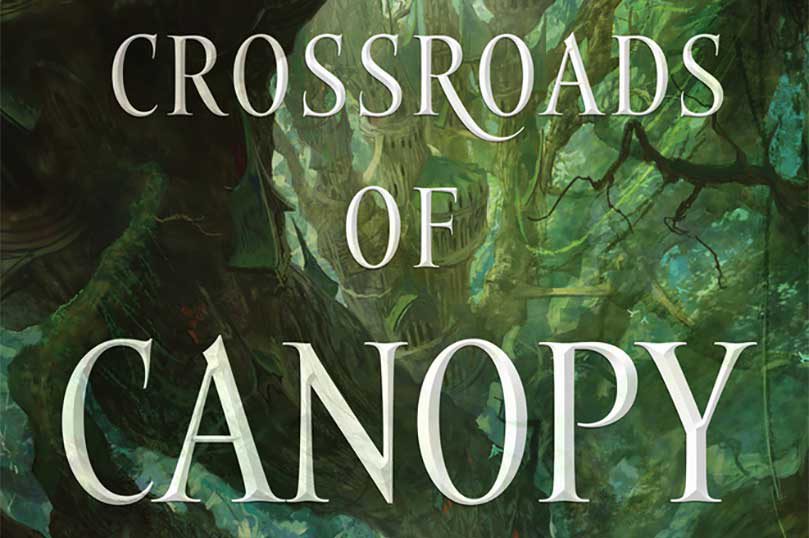






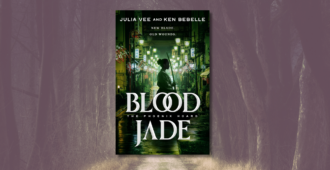
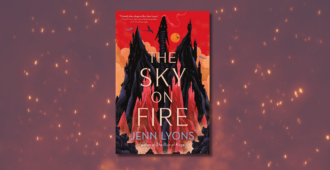
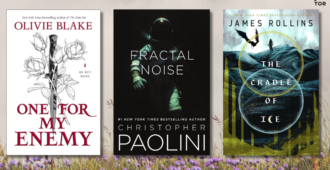
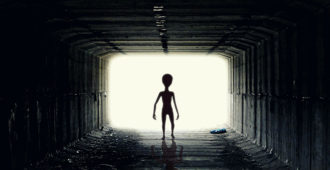
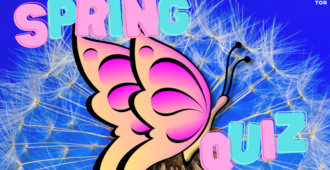
The Enchanted Forest in the Enchanted Forest Chronicles!
I don’t want to give anything away, but there is a sacred tree at the heart of Tanith Lee’s masterpiece ‘The Blood of Roses’ that is one of the best characters in all of Fantasy.
“those same cedar forests appeared in the Epic of Gilgamesh” Derick Jenson, in his heart-wrenching book ‘Something Like War’ postulates that “the history of civilization is the history of deforestation” starting with the Epic of Gilgamesh.
*takes down book names* Seem like good recs, thanks!
Thank you for honing in on this very important though undermentioned aspect of the genre.
In terms of other titles worth adding via the comments, Naomi Novik’s “Uprooted” is a major recent addition to the great forests of Fantasy. Robin McKinley’s “Beauty” is a longer standing take on the theme and I loved Helen Lowe’s treatment of an enchanted wood in “Thornspell.”
Can I suggest Robert Holdstock’s Mythago Wood and The Mythago series are worthy of a mention?
Totally agree about Mythago Wood, that was the first book that came to mind when I saw this.
The Green Sky trilogy by Zilpha Keatley Snyder (from the 70s) is a beautiful Middle Grade (?) sci fi / fantasy series that is steeped in the tall sweeping forest above and the tunnels beneath the roots of those massive trees. I used to re-read the opening sequence of gliding and climbing through the trees to find a peaceful spot among the highest branches whenever I couldn’t sleep as a kid.
Also the Reaches in Martha Wells’ Raksura books are another vast rainforest with a lot of depth and diversity and many of the short stories in particular are steeped in it (whereas many of the novels voyage out of it, though you still get a strong sense of it both as being home and yet being more vast and varied than they can know). The entire colony (about the size of a town) lives in one tree and they are friendly neighbors with the race that lives among their tree’s roots.
One of my favourite fantasy series growing up was the Edge Chronicles by Paul Stewart and Chris Riddell. Much of the series (especially the first book; Beyond the Deepwoods) takes place within the huge forest that makes up the majority of the world of ‘The Edge’ and is devoted to describing the numerous varieties of flora and fauna that live there.
Brandon Sanderson’s Forests of Hell are pretty awesome.